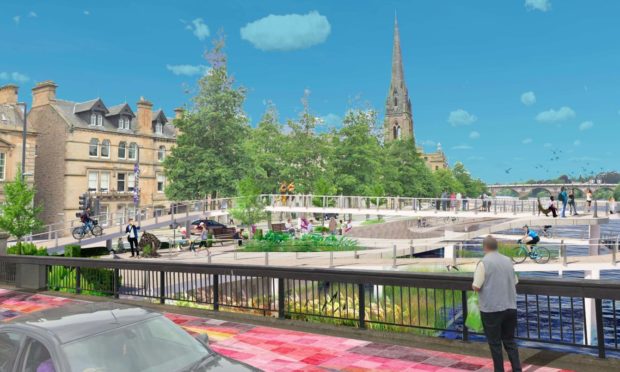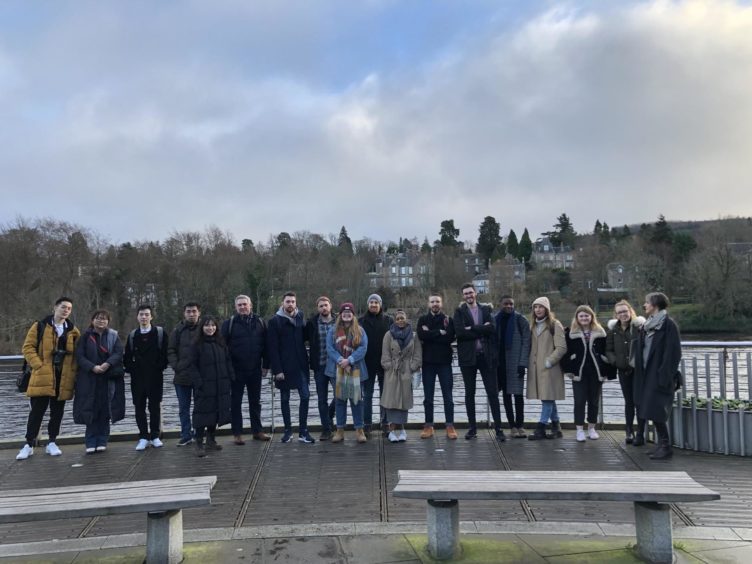Dundee University students have unveiled a bold vision for the future of Perth, complete with a vibrant “urban waterfront”, pedestrianised thoroughfares and the redevelopment of disused railway lines.
Undergrads were challenged to design a makeover for the historic Fair City, inspired by ongoing efforts to modernise Perth and have it recognised as “one of Europe’s great small cities”.
The work was carried out by Urban Planning and Spatial Planning students, using the city as an “urban laboratory” to explore and test out new ideas.
Suggestions include a traffic ban on several city streets, as well as more fanciful ideas such as the transformation of the Canal Street multi-storey car park into a wellbeing hub with colourful flume-style slides.
A proposed urban waterfront envisages a network of bridges and walkways jutting out over the River Tay.
The Perth 2040 project involved a strategic partnership between the university and Perth and Kinross Council, with ambitions and strategies laid out to mirror the local authority’s own vision.
Dr Husam AlWaer, reader in Architecture and Urban Planning, said: “The urban laboratory model enables students to study a place intensively in a manner that addresses real issues and problems, providing solutions aimed at improving the quality of life for its own communities, businesses and visitors.
“Students were encouraged to critically and spatially explore place themes related to health and wellbeing, connectivity, local economy, cultural and perceptional aspects, public realm, waterfront and street design.”
He added: “The various propositions included considering the re-use of existing buildings, parking facilities, cultural assets, streets and public spaces to deliver housing, creative industry, businesses and services – all mutually connected to build up a cumulative impact upon the wider city of Perth.
“We hope this research project provides a source of inspiration for the Perth community as we plan into the future to 2040 and beyond.”
David Littlejohn, Head of Planning and Development at Perth and Kinross Council, said the students’ work will help inform and shape the city’s future.
“This new and exciting link-up between academic, public and private practitioners has helped advance research and inform best practice to shape future place-based investment and development.
“This project is part of an ambitious programme to collaborate with our communities to design and deliver better places.
“We are keen that as many people as possible now take the opportunity to view this work by commenting on the students’ ideas in the online exhibition.
“This will help us begin to think about how, together, we can help make some of these ideas a reality as part of the future transformation of the city and wider area.”
The project will feature at an online conference hosted by the Perth Leadership Forum later this week.






